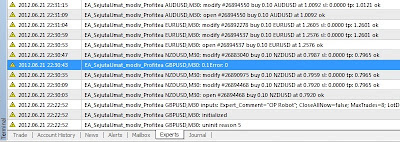Original by IFX Adrian | Monday, December 10, 2012
0 Comments
About Forex Market
Original by IFX Adrian | Friday, May 11, 2012
1 Comments

Forex is the largest currency exchange market in the world; its daily turnover reaches 3-4 trillion dollars which exceeds the daily volume of stock market and futures market put together. Forex was established at the end of XX century when all major countries decided to turn from the fixed currency rates to floating ones.
All operations at the currency exchange market are executed by the system of institutions: brokers and dealers, central and commercial banks, pension funds and insurance companies and also TNC (Trans-National Corporation).
The main commodity of Forex is currency of different countries; the main currency is the American dollar. As far as economies of the leading world countries are closely interconnected, there are often happens currency fluctuations which allow market participants to earn on it.
Unlike stock exchange, Forex market does not haventhe certain location, everyone can trade in the office or at home, the main things you need are computer and Internet connection. The market works 24 hours 5 days a week which allows market members to make transactions any time of a day.
The peculiarity of Forex market is its safety from collapse because of constant currency fluctuations – growth of one currency inevitably leads the fall of other and this means that market woke up.
Owing to the fact that trading can be executed distantly by means of Internet, Forex became accessible for anyone. Besides, it is not necessary to hoard the money; you can start trading even with 1 dollar in your pocket!
The important feature of the currency market is its stability. The main threat of any financial market is a breakdown of market index, market decline. Nevertheless, as against the stock market Forex does not fall. If shares show depreciation this means destruction. If the dollar dropped, this means that the other currency becomes stronger. For example, for several months the yen rose in price against the dollar by 25% to the end of 1998. In some days the dollar reduction was estimated by tens percent. However, the dollar falling as well as the downfall of any other currency could not be a reason for collapse of currency market and trading continued in a usual way. This is the main feature of market stability and related business: the currency is the most liquid and secure trading tool.
The most wide spread (liquid) currencies, i.e. “major”, are the most interesting for speculators. Today more than 85% of all transactions are the deals with major currencies, such as the US dollar (USD), the Japanese yen (JPY), the Euro (EUR), the British pound (GBP), the Swiss franc (CHF), the Canadian dollar (CAD) and the Australian dollar (AUD).
It is important to understand the notation system of exchange rates. This is a rather simple question, if it is remembered that the notation of all major currency pairs is a single-typed. On each side of the slash (“/”) there are two symbols the value of which against each other is shown by the rate of the present currency pair: EUR/USD (the Euro against the US dollar), GBP/USD (the British pound against the US dollar), USD/JPY (the US dollar against the Japanese yen), etc. The slash (“/”) in notation of currency pairs’ symbols is often missed and abbreviation of currencies looks like EURUSD, GBPUSD, USDJPY.
The essence of operations at currency market is evident – the making profit from the movement of one currency rate against another. The whole foreign exchange market consists of the total currencies rates; each shows the relative value of one national currency against another. For example, when it is said that 1 Euro is sold for 1 dollar 34 cents, this mean that the EUR/USD rate is 1,3400.
Labels:
About Forex,
Forex Info













 Home
Home Tukaran Link
Tukaran Link Pasang Iklan
Pasang Iklan Contact Me
Contact Me






